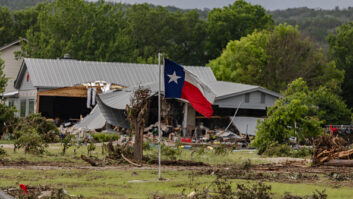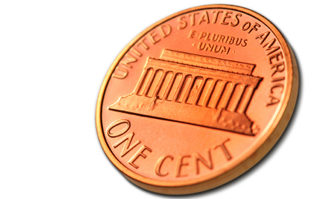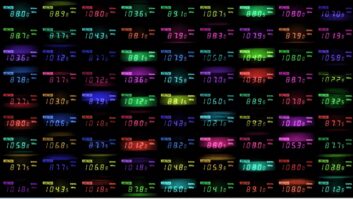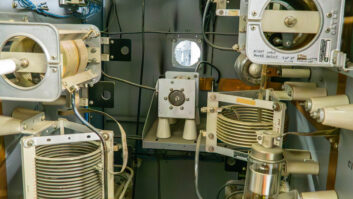The author is chair of the Committee to Preserve Radio Verifications.
Recent articles in Radio World about AM DXing (long-distance listening) and QSLs (cards and letters verifying reception) are a reminder that the hobby of long-distance radio listening is still around.
During the first few years of the 1920s the novelty of the radio medium made AM broadcast DXing very popular with the general public. Interest waned mid-decade but was rekindled in the early 1930s with the advent of shortwave broadcasting and the possibility of reception over hitherto-unachievable distances. DXing declined during World War II, but bounced back during the Cold War and held its own until the media landscape began changing in recent years.
Among the hardcore, however, the thrill has never died.
Primal spirit
To the DX cognoscenti there is nothing quite so exciting as hearing a faraway signal, direct, with nothing between you and the station except the ether. It is not about how well you hear a station, or what the programs are. It’s about distance, and power. The noise, fading and interference of a tough DX catch just add to the excitement.
(click thumbnail)
Purists like a QSL to have the date, time and frequency of reception, but usually have to settle for less. (click thumbnail)
Here is a 1941 letter from Edwin H. Armstrong QSLing reception of his Alpine, N.J., FM station, two years after regular programming began. It was on 42.8 mc., 35 kW. Tragically, Armstrong lept to his death in 1954. (click thumbnail)
The Portuguese African colony of Angola was home to numerous stations, many of which supplemented their mediumwave transmissions with shortwave in order to reach the country’s interior. This card is from 1948.
DXing is an acquired taste, especially on shortwave. Your neighbor might be able to relate to the novelty of hearing a domestic AM station at a long distance. But try to explain the joys of staying up all night to listen to a station that you can barely hear, broadcasting in a language that you don’t understand.
For years DXers believed that if they could only get people to try DXing, they would like it. They found that the primal spirit that motivates the DXer is not easily transferable.
One of the tangible byproducts of DXing is the QSL, the card or letter from a station responding to a reception report in which the listener proves his or her reception by describing the programming heard. The QSL verifies the listener’s reception. DXers collect QSLs as mementos of their reception and as evidence of DXing achievement.
(click thumbnail)
W2XCD was an early (1929) experimental television station of the De Forest Radio Co. in Passaic, N.J., and 1604 kc. was the audio channel. That is, of course, a drawing of the ‘old man’ himself. (click thumbnail)
Adding the temperature to the station’s QSL card was a nice way to promote ‘America’s Year-Round Playground,’ Miami Beach.
The QSLing of broadcast stations is often thought to have been an outgrowth of the common ham practice of exchanging QSLs of two-way amateur contacts (“QSOs”), thus applying to the one-way medium of broadcasting a practice that developed in the two-way medium of ham radio.
In fact, however, ham QSLing itself grew out of the even earlier practice of hams and non-hams alike sending postcard reception reports to hams and other experimental stations that they heard.
This pattern took root in the second decade of the 1900s. In those very early years, transmitter range was the main indicator of station performance, hence a station operator’s interest in knowing how far his signal could be heard by whoever happened to be listening. Such reports were considered valuable, whether coming from the ham at the other end of a QSO, a listening ham, or a non-ham listener or experimenter. Thus reception reports to broadcast stations actually represented a return to the earliest conventions of listener-station contact.
CPRV
Since 1986, a six-person group called the Committee to Preserve Radio Verifications has been archiving collections of QSLs belonging to listeners who have passed away or are no longer collecting. Originally sponsored by the Association of North American Radio Clubs, a listener club umbrella group that operated for 40 years, the committee has functioned independently since 2005.
(click thumbnail)
This QSL really captures the broadcasting environment of 1922: ‘weather, markets, crops, oscillators, modulators, speech amplifier.’ But no mention of frequency; it was all wavelength back then, and the standard channels were 360 meters (entertainment) or 485 (market and weather reports). (click thumbnail)
A simple card, but a nice acknowledgment of the usually headphone-attired DX community.
The QSLs are housed at the Library of American Broadcasting on the campus of the University of Maryland in College Park. The approximately 45,000 QSLs under roof (the figure includes duplicates) are mainly from U.S. and foreign AM stations and shortwave broadcast stations worldwide, with some FM, TV, amateur and utility stations represented as well. The collection includes QSLs belonging to more than 200 DXers. From some there are just a few QSLs; other collections run well beyond a thousand.
To leaf through the collection is to see radio history pass before your eyes. The oldest QSL, a ham card, is from 1921; the oldest from a U.S. AM station is from WKN, Memphis, Tenn., 1922.
Among the QSLs in the collection are a 1923 letter from KDKA; a 1941 letter from Edwin H. Armstrong verifying reception of his FM station, W2XMN; and a letter and card from pioneer shortwave broadcaster PCJ in Hilversum, Holland sent in 1929 while shortwave broadcasting was still in the experimental stage.
QSLs needn’t be of special historical significance to be interesting, however. There are QSLs from big stations and small stations, from World War II and from the Cold War years, from private stations and government stations, from the U.S. and from exotic locations, from countries that no longer exist — even from pirate stations and clandestine broadcasters.
(click thumbnail)
This QSL is from a staton in the ‘new’ expanded (‘X’) band, WTAW, 1620 kHz. The expanded band offered unprecedented opportunities for DX when it was less crowded than it is now, including East Coast reception of California stations, interference-free. (click thumbnail)
PCJ, the Philips station in Eindhoven, Holland, was one of the pioneer shortwave broadcasting stations, having begun regular service in 1927. The steerable towers shown on this 1937 card were among the most advanced antennas of the day.
Some QSLs are simple, others elaborate; sometimes the text is pro forma, other times detailed and personal. Often stations enclose a schedule, coverage map, photograph or other souvenir. Station logos, signatures of station personnel, descriptions of equipment, etc. provide a valuable connection to the station’s history. Sometimes it is the only history that remains.
Although CPRV began as an effort to memorialize the work of individual DXers by salvaging this material that was probably headed for the dumpster, it is more than a sentimental exercise. The collection has served as a source of information and graphics for books, articles, websites, etc. Because of the size and scope of the collection, a station’s QSLs over a range of years can be compared, offering some visible continuity to the history of stations, many now long gone.
QSLing has changed over the years. Once the province of the station’s technical staff to whom long-distance reception was no less a novelty than it was to the listener, today QSLing is mainly a matter of listener relations. And much QSLing is now done electronically. While plainish-looking e-mail verifications do not display as well as their postal mail counterparts, a colorful e-mail attachment can offer much the same satisfaction as a paper QSL.
(click thumbnail)
Front: Founded in 1953, Radio Liberation (later called Radio Liberty) broadcast to the Soviet Union. Transmitting from Germany, it was funded by the CIA, a fact not known at the time. Reverse: Like its sister station Radio Free Europe, Radio Liberation attracted a huge volume of jamming and was a challenge to hear clearly in the United States. The Soviets took the station seriously and engaged in much anti-Radio Liberation counteraction. Employees, especially émigrés, had good cause to fear for their lives.
Alas, budgetary considerations have led some stations to stop verifying altogether, and in general it is harder to pry a QSL from a station than it used to be. But for those bitten by the QSL bug, it is still the essential last step in a DX experience.
Readers wishing to learn more about CPRV or see more of the committee’s QSLs should go to the CPRV section of www.ontheshortwaves.com. Inquiries should be sent to [email protected]. If you are seeking a new home for some old QSLs, let us know.
Jerry Berg is a retired attorney. He is a member of the executive council of the North American Shortwave Association and co-producer of the website www.ontheshortwaves.com. He has been a DXer for more than 50 years and has written three books on the history of DXing and shortwave broadcasting, published by McFarland.

















